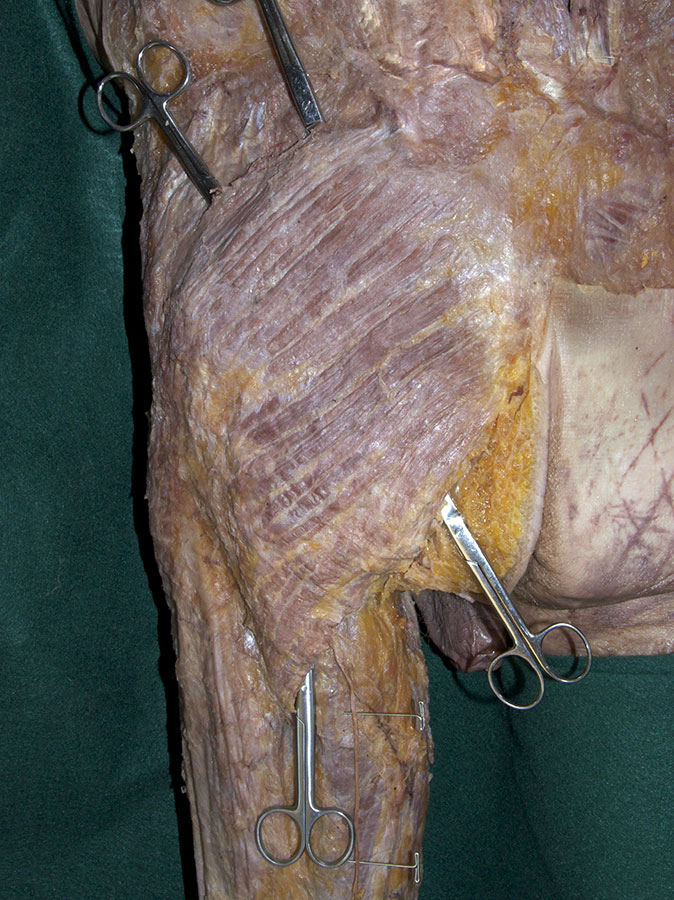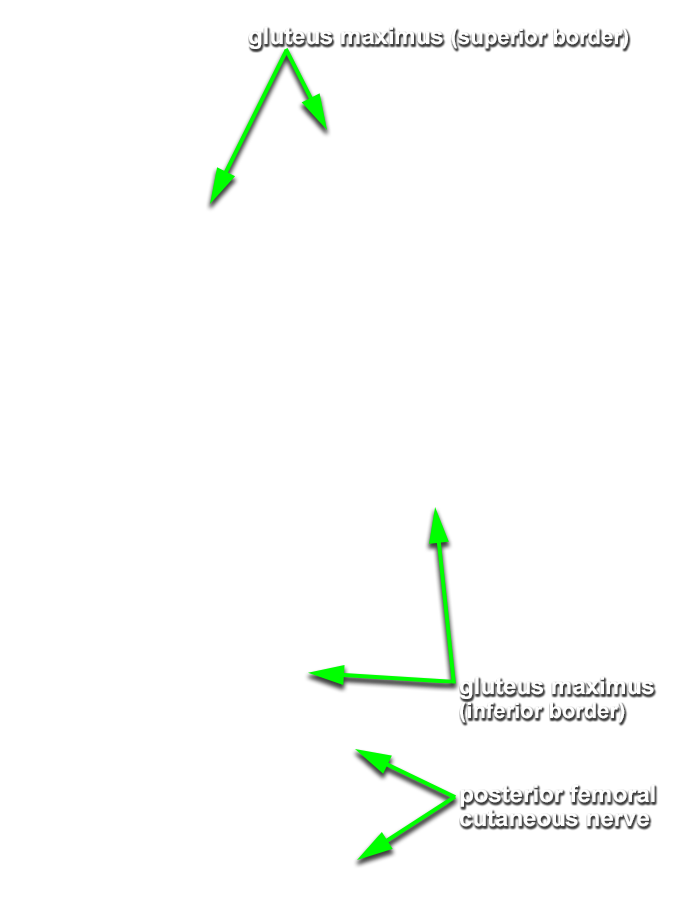Reflect the gluteus maximus muscle towards the iliotibial tract. (G 6.28B;N 482;Gl 31.16)
- Use your fingers to separate the superior border of the gluteus maximus from the underlying gluteus medius. You may need to use scissors to separate the fused deep fascia of the two muscles. The fascicles of the gluteus medius have a superior - inferior orientation.
- Look for the stump of the posterior femoral cutaneous nerve at the inferior border of the gluteus maximus. (G 6.6B;N 490;Gl 34.35A) This nerve exits the gluteal region by passing between the gluteus maximus and the underlying structures. Use the nerve as a guide to locate the correct plane for separating (with your fingers) the gluteus maximus from the underlying structures.
- Work your fingers under the muscle from both directions until they meet. You should feel a slippery plane separating the deep surface of the gluteus maximus from the underlying structures.
- Elevate the superior border of the gluteus maximus and carefully cut the muscle at its attachment to the ilium and sacrum.
- Elevate the inferior border of the gluteus maximus and cut its medial attachment to the sacrotuberous ligament. Do not cut this ligament and do not cut the nerves and vessels passing deep to this ligament.
- Reflect the gluteus maximus towards its lateral attachments. You will need to cut the inferior gluteal nerve and vessels as they enter the deep surface of the muscle. Cut the nerves and vessels as close to the gluteus maximus as possible. Do not cut any of the lateral attachments (gluteal tuberosity or iliotibial tract) of the gluteus maximus muscle.


